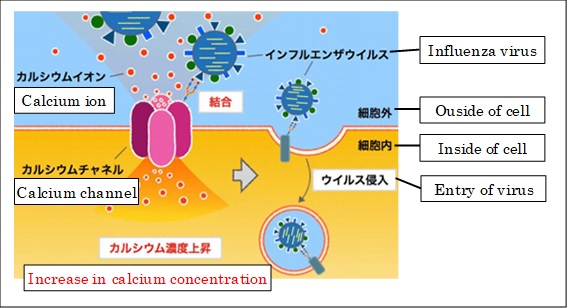News
Hokkaido University Finds Key to the Entry of Influenza Virus Updated in July 2018
Researchers at the University of Hokkaido Graduate School recently announced that they discovered key proteins that enter the body and infect us with the influenza virus. Because of this characteristic, anti-hypertension drugs, which are commonly used to treat high blood pressure could be used to prevent infection. The results were published in the American medical journal Cell Host & Microbe.
Influenza infection begins when the virus enters healthy cells, but the detailed process of its entry was unknown. When the virus enters the body, cells were believed to contain proteins that serve as receptors. Such a receptor protein has not been identified for more than 40 years.
Yusuke Ohba (Professor) and Yoichiro Fujioka (Lecturer) at Hokkaido University Graduate School of Medicine, announced these results. Professor Ohba and his colleagues had already clarified that an increase in calcium ion concentration within the cell is key to the entry of influenza virus. A calcium ion is a positively charged calcium atom, and its concentration can increase from additional calcium ions coming into the cell from outside.
The group continued with this new research and analysis to find a protein called “calcium channel” which can control the concentration of calcium ions. This is the key receptor protein for influenza virus infection. This calcium channel is primarily present in the plasma membrane and is associated with high blood pressure or hypertension. The drug that blocks the concentration is called "calcium channel blocker" and is widely used to treat hypertension.
The research group thought that the calcium channel blocker might inhibit the infection. They conducted an experiment by infecting two groups of mice with the influenza virus: one group administered with the blocker and another without the blocker. The mice without the blocker were infected by the virus and died 4 days later. For the mice with the blockers, their body weight had decreased at one point, but returned to healthy conditions afterwards.
From these results, Professor Ohba’s group suggests that the calcium channel blockers actually control influenza virus infection. Calcium channel blockers, commonly used as anti-hypertension drugs, may become a potent inhibitor to prevent influenza infection.
https://www.global.hokudai.ac.jp/blog/key-molecule-for-flu-infection-identified/








